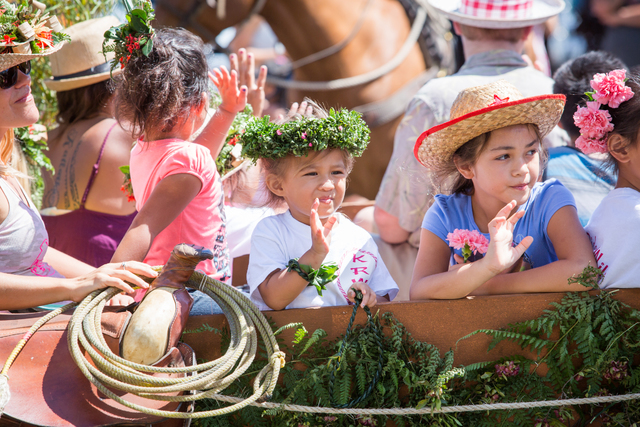We’re growing faster, younger and more diverse. ADVERTISING We’re growing faster, younger and more diverse. The Big Island continues to lead Hawaii in the rate of population growth, according to the U.S. Census Bureau, which late Wednesday released county-level estimates
We’re growing faster, younger and more diverse.
The Big Island continues to lead Hawaii in the rate of population growth, according to the U.S. Census Bureau, which late Wednesday released county-level estimates of population, sex, race and age for 2014.
Between 2013 and 2014, Hawaii County added 2,781 new residents, a growth rate of 1.45 percent, bringing the island’s population to 194,190. That compares to an increase of 1.39 percent on Maui, 1.14 percent on Kauai and 0.48 percent in Honolulu.
Statewide, 10,574 people were added to the population, a 0.75 percent increase.
There are slightly more men than women on Hawaii Island, with 97,157 men and 97,033 women living here in 2014.
In contrast to most states, Hawaii was one of five states that experienced a decline in median age between July 1, 2013, and July 1, 2014. The others were North Dakota, Montana, Wyoming and Iowa.
While the state’s median age is steadily decreasing, the number of residents 65 and older is increasing, a paradoxical trend that most struck Eugene X. Tian, administrator for the Research and Economic Analysis Division of the state Department of Business, Economic Development and Tourism.
“There’s been an increase in younger population, but we’re still one of the oldest states,” Tian said.
The state’s median age in 2014 was 37.9, compared to 38.6 in 2010, he said. But the number of people 65 and older has increased roughly 3.8 percent annually and now accounts for 16.1 percent of the population. Hawaii Island’s share is the largest in the state, at 17.5 percent.
Fueled by millennials — America’s youth born between 1982 and 2000 — overtaking baby boomers, 44.2 percent of the nation’s population is now part of a minority race or ethnic group other than non-Hispanic, single-race white.
As would be expected, Hawaii’s at the top of the diversity index, with a full 77 percent of its population a minority race. It’s one of just five states or equivalents with a majority minority population.
Non-Hispanic whites total 59,422 people on Hawaii Island, or 30.6 percent of the population. Blacks or African Americans were among the smallest racial groups, accounting for just 0.89 percent of the population.
Some 29.4 percent of the people living on Hawaii Island report they are of two or more races.
Hawaii was the nation’s only majority-Asian state, with people of this group comprising 56.2 percent of the total population. Slightly more than 22 percent of Hawaii Island’s population is Asian alone, a number that increases to 45 percent for Asian alone or in combination with other races.
It’s no surprise that Hawaii had the largest population of Native Hawaiians and Other Pacific Islanders of any state (370,000) in 2014 and the highest percentage (26.0 percent). California had the largest numeric increase since 2013 (7,000).
Of the counties, Honolulu had the largest population of Native Hawaiians and Other Pacific Islanders of any county (239,000) in 2014, and Hawaii County had the highest percentage (34.4 percent). Clark, Nev., had the largest numeric increase since 2013 (1,100).
The state as a whole gained 10,574 new residents between 2013 and July 1, 2014. Of those, 2,781 settled on the Big Island.
The numbers are important. The federal government uses census data when it distributes more than $400 billion in federal funds each year. Local governments use the numbers to determine where to build roads, new schools and allocate community services.
Of the 9,111 new residents on the Big Island in the past four years, 3,723 are the result of natural population changes, that is the number of births minus the number of deaths.
Another 3,087 moved here from other countries and 2,163 came from within the United States, including elsewhere in Hawaii. The Census Bureau was unable to categorize the remaining 138 people in its population estimate.



